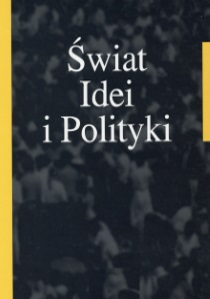Intelligence Creation: Information Activities in the Field of Security Policy
DOI:
https://doi.org/10.34767/SIIP.2019.18.08Keywords:
security policy, intelligence, counter-intelligence, cybersecurity, peacekeeping missionsAbstract
The enormous changes and constant developments in the applications of technology and communication have changed the way the world is perceived. The information revolution has impacted intelligence gathering, processing, analysis and dissemination, as well as how decision-makers can access reliable information in a timely manner, and the sources they are likely to rely on when concrete information is needed to make decisions. This article attempts to describe, analyze and explain the nature of the ongoing information revolution, its main impact on intelligence and security policy, and the importance of intelligence analysis in the context of peacekeeping operations.
References
Barnea, A. (2017). Counterintelligence: stepson of the intelligence discipline. Israel Affairs, 23/4, ss. 715–726.
Bitton, R. (2014). The legitimacy of spying among nations. American University International Law Review, 29/5, ss. 1009–1070.
Bossong, R.(2014). The European Programme for the protection of critical infrastructures – meta-governing a new security problem? European Security, 23/2, ss. 210–226.
Brown, G. (2016). Spying and Fighting in Cyberspace: What is Which? Journal of National Security Law & Policy, 8/3, ss. 1–22.
Degaut, M. (2016). Spies and Policymakers: Intelligence in the Information Age. Intelligence and National Security, 31/4, ss. 509–531.
Edwards, J.A., & Valenzano J.M., & Stevenson K. (2011). The Peacekeeping Mission: Bringing Stability to a Chaotic Scene. Communication Quarterly, 59/3, ss. 339–358.
Fripp, W. (2018). The hacked world order: how nations fight, trade, maneuver, and manipulate in the digital age, Intelligence and National Security, 33/4, ss. 623–626.
Górka, M. (2016a). Dyplomacja i wywiad. Przyczynek do refleksji nad polityką bezpieczeństwa. W: M. Górka, (red.), Wywiad i kontrwywiad w polityce międzynarodowej na przełomie XX i XXI wieku, (64–82).Warszawa: Adam Marszałek.
Górka, M. (2016b). Wolność czy bezpieczeństwo? Przyczynek do rozważań na przykładzie ustawy o działaniach antyterrorystycznych z dnia 10 czerwca 2016 roku. Kwartalnik Naukowy OAP UW e-Politikon, 19, ss. 64–82.
Górka, M. (2017c). Technologia informacyjna w obszarze cyberbezpieczeńśtwa państwa i społeczeństwa. Systemy wspomagania inżynierii produkcji, 6/5, ss. 73–89.
Górka, M. (2017d). Rola i zadania kontrwywiadu w obszarze funkcjonowania państwa z uwzględnieniem wybranych aspektów polityki bezpieczeństwa III RP. Środkowoeuropejskie Studia Polityczne, 2, ss. 103–123.
Górka, M. (2017e). Wybrane aspekty polityki bezpieczeństwa w kontekście zagrożeń terrorystycznych w Europie. Symbolae Europaeae, 11, s. 64.
Kahana, E. (2001). Mossad – CIA Cooperation. International Journal of Intelligence and CounterIntelligence, 14, s. 410.
Lahneman, W.J. (2010). The Need for a New Intelligence Paradigm. International Journal of Intelligence and Counterintelligence, 23/2, s. 209.
Lefebvre, S. (2017). „The Belgians Just Aren’t up to It”: Belgian Intelligence and Contemporary Terrorism. International Journal of Intelligence and CounterIntelligence, 30/1, ss. 1–29.
Mattern, T., & Felker J., & Borum R., & Bamford G. (2014). Operational Levels of Cyber Intelligence. International Journal of Intelligence and CounterIntelligence, 27/4, ss. 702–719.
Melman, Y. (2012). Mossad’s split personality. The Jerusalem Report, 31 grudnia.
Omilianowicz, R. (2009). Wykorzystanie otwartych źródeł informacji w działalności wywiadowczej. W: W. Wróblewski, (red.), Wywiad i kontrwywiad w świecie (145–158). Szczecin.
Rudner, M. (2013). Cyber-Threats to Critical National Infrastructure: An Intelligence Challenge. International Journal of Intelligence and CounterIntelligence, 26/3, ss. 453–481.
Shetler-Jones, P. (2008). Intelligence in Integrated UN Peacekeeping Missions: The Joint Mission Analysis Centre. International Peacekeeping, 15/4, ss. 339–358.
Shimron, G. (1996). The Mossad and the Myth. Tel Awiw.
Sloan, S. (2002). Meeting the Terrorist Threat: The Localization of Counter Terrorism Intelligence. Police Practice and Research, 3/4,ss. 337–345.
Steele, R.D. (2006). Peacekeeping Intelligence and Information Peacekeeping. International Journal of Intelligence and CounterIntelligence, 19/3, ss. 519–537.
Stefanescu, D.C. (2017). Military capabilities that Romania needs for preventing and waging a hybrid war. Review of the Air Force Academy, 1, ss. 155–160.
Stephens, E. (2008). Caught on the hop: the Yom Kippur war. History Today, 58/10, ss. 44–50.
Svendsen, A.D.M. (2012). The Federal Bureau of Investigation and Change: Addressing US Domestic Counter-terrorism Intelligence. Intelligence and National Security, 27/3, ss. 371–397.
Tyler, P. (2014). Twierdza Izrael. Zakulisowa historia elit wojskowych, które uparcie bronią się przed pokojem. Poznań.
Wilner, A. (2017). Cyber deterrence and critical-infrastructure protection: Expectation, application, and limitation. Comparative Strategy, 36/4, ss. 309–318.
Woodhouse, T. (2010). Peacekeeping, Peace Culture and Conflict Resolution. International Peacekeeping, 17/4, ss. 486–498.

